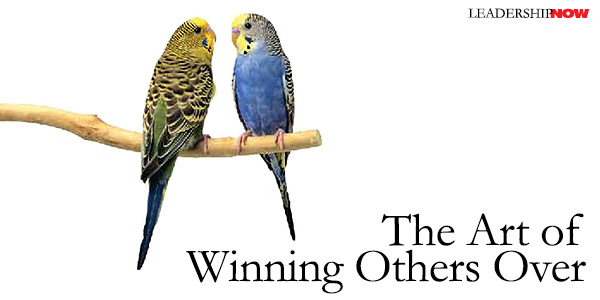 |
 |
11.05.07

The Art of Winning Others Over
If there is any secret of success, it lies in the ability to get the other person’s point of view and see things from that person’s angle as well as your own. IN The Art of Woo or "Winning Others Over," authors Richard Shell and Mario Moussa, make the case that wooing is one of the most important skills in a manager's repertoire. Research would seem to support this claim as people with strong social skills have been shown to command higher fees and salaries than equally talented but less socially adept colleagues. And they are no doubt more pleasant to be around. Winning others over is an art. It is the ability to sell “your ideas to people within the context of ongoing, important relationships.” They maintain, “If you want to be a player in your organization, a successful partner with your customers or suppliers, a leader in your community, or even a good parent, you need to woo people to your point of view by putting your ideas across in convincing, relationship-friendly ways.” To that end, they remind us that the idea in persuasion is not to defeat the other person but to win them over. The place to begin is in understanding your own persuasion style. They have identified five types—The Driver, The Promoter, The commander, The Chess Player, and The Advocate—and have included a Persuasion Style Assessment to get you started. Whatever your preferred style tends to be, the idea is to strike a balance between what the authors identify as the "self-oriented" perspective-where focus is on the persuader's credibility, and point-of-view and the "other-oriented" perspective, which focuses on the audience's needs, perceptions, and feelings. They have created a systematic strategy or Woo Process, to aid you in skillfully getting your point across. In brief, they are: Step 1: Survey Your Situation, that is
They note that authority plays a background role in most interactions and while it can be useful in some situations, it should not be relied upon especially where there are multiple stakeholders. They say, “The formal roles people occupy are the starting positions for a complex dance of organizational influence.” They also note that actually, the higher up you go in an organization, the less authority comes into play and the more important relationship and persuasion skills become. 
Posted by Michael McKinney at 09:03 AM
|
BUILD YOUR KNOWLEDGE
 

How to Do Your Start-Up Right STRAIGHT TALK FOR START-UPS 
Grow Your Leadership Skills NEW AND UPCOMING LEADERSHIP BOOKS 
Leadership Minute BITE-SIZE CONCEPTS YOU CAN CHEW ON 
Classic Leadership Books BOOKS TO READ BEFORE YOU LEAD |